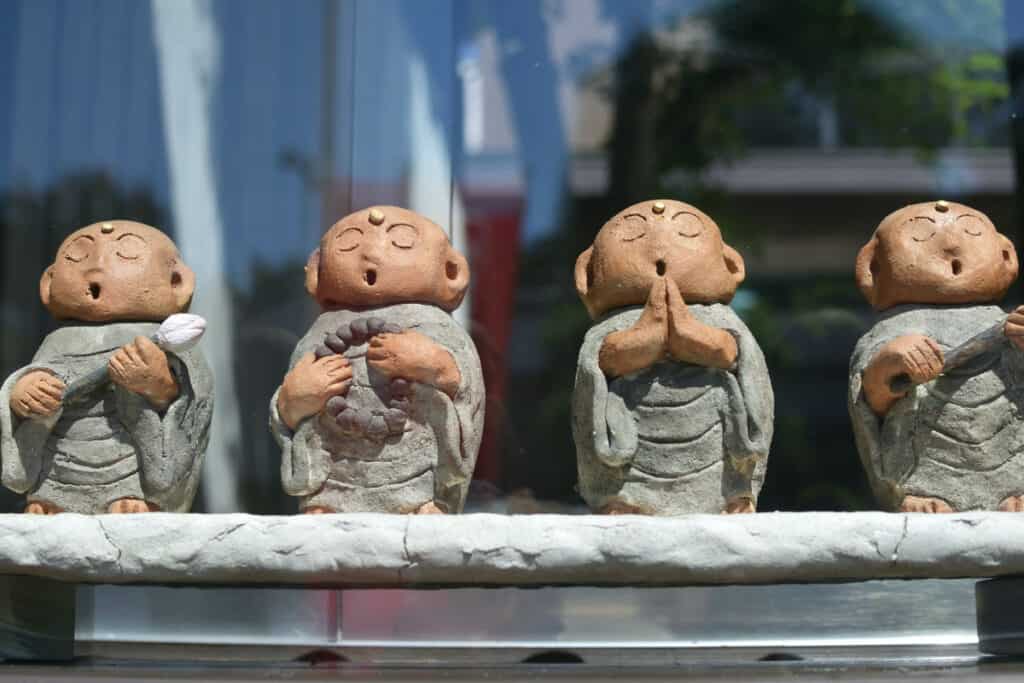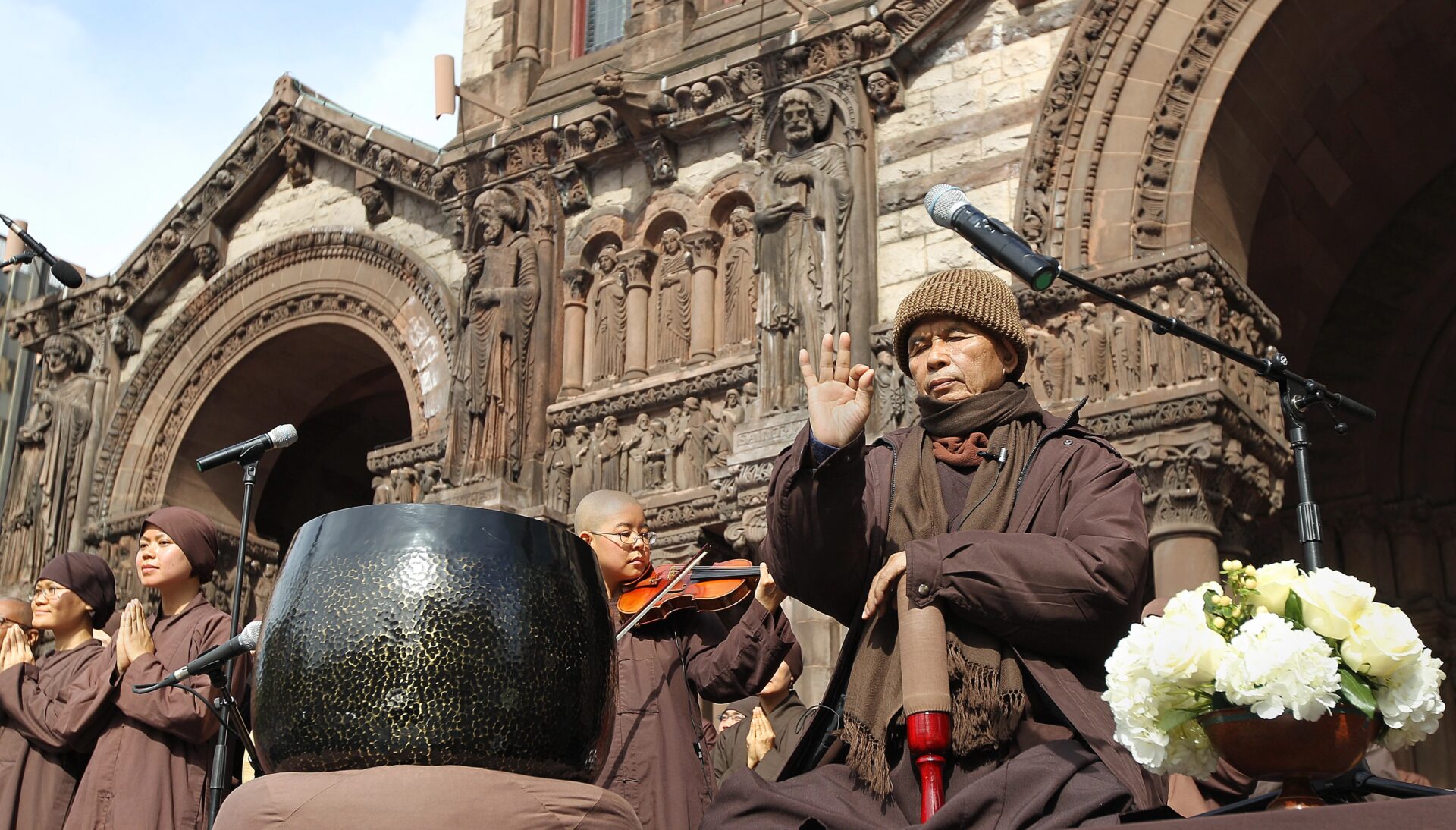Exploring the Transformative Power of Mantra Yoga Practice
The post Exploring the Transformative Power of Mantra Yoga Practice appeared first on The Yoga Nomads.

From the outside, mantra yoga may seem like just chanting random words, but this ancient practice is a transformative journey toward self-discovery.
The beauty of mantra yoga lies in its simplicity yet profoundness. Whether you’re an experienced yogi or new to this path, these sacred sounds can bring about incredible transformations in your life.
Intrigued? Roll out your yoga mat, slip into your favorite yoga pants, and get ready to delve deep into the world of yoga mantra!
Mantra Yoga From Its Ancient Roots to Modern Relevance
Mantra yoga is deeply rooted in the time-honored Vedic Sciences and Tantra traditions. Despite its ancient origins, it remains an influential tool in our contemporary world, using sound vibrations to foster spiritual growth and universal connection.
The Power of Sacred Sounds
Mantras, also known as sacred sounds, are seen as embodiments of divinity within sonic structures.
Mantras have been passed down through generations from the teachings of Vedic Sciences, serving as pathways to spiritual enlightenment. When we chant these mantras, they are believed to create a direct link between us and the cosmic energy field.
Each yoga mantra syllable represents specific aspects of divinity, allowing us to open doors on our spiritual path toward self-realization and connection with divine consciousness.
In today’s fast-paced world, where stress often dominates our lives, mantra yoga is an enlightening and uplifting tool for cultivating more presence and inner peace.
Understanding the Science Behind Mantra Yoga

The power of mantra yoga lies in the profound way the sound vibrations impact our consciousness. This vibration resonates with specific frequencies that connect to aspects within us related to healing emotional wounds and awakening hidden potentials.
How Mantras Influence Our Consciousness
Our mind is crucial in this process, especially the subconscious part. Our subconscious is a powerful realm where thoughts originate, and emotions take root.
In everyday life, most of us are unaware of what is happening in our subconscious mind, let alone have any control over it. So what makes mantras so magical is the way their sound vibrations can influence this part of the human mind.
The best way to understand the power of mantras is to think of them like seeds planted in the fertile soil of your subconscious mind. As you chant a mantra with focus and concentration, these words become potent forces that can reshape the way you think.
In addition, studies on the benefits of chanting OM indicate that regular engagement in mantra yoga can calm our nervous system while improving our memory capabilities.
This is because chanting helps synchronize the left and right sides of the brain, promoting alpha brain waves associated with relaxation. Furthermore, when we fully concentrate on a single word or phrase (known as Japa), distractions fade away, leading to clearer thinking and enhanced logical abilities.
Discovering Different Types of Mantras

The world of mantras is diverse, with each Sanskrit word or phrase carrying its own distinct vibration and meaning. Let’s look at some of the most common mantras you may encounter in yoga practice.
Popular Mantras Used in Yoga Practice
Each of these following chants emits unique vibrations that interact with our consciousness differently based on their intended purpose. They can be used for healing or enhancing concentration during meditation sessions.
Om is known as the universal mantra as it is said to be the first sound of creation, thus this one syllable encompasses the entire universe. The Gayatri mantra pays homage to the sun god and seeks enlightenment. The Panchakshara mantra’ Om Namah Shivaya’ is associated with Lord Shiva and represents the five elements that form our physical existence: earth, water, fire, air, and sky. The powerful chant “Om Namo Bhagavate” translates to “I humbly bow down to divinity.” It is used to overcome obstacles and achieve success. The Vaishnava mantra ‘Hare Krishna,’ consisting of 16 words, signifies supreme pleasure or the eternal energy of God. It is believed to rid the mind of evil thoughts and the heart of negative emotions, allowing you to access true joy. The Mahamrityunjaya mantra is used to invoke Rudra, another form of Shiva, to seek protection against death and experience spiritual rebirth. The popular chant ‘Om Gam Ganapataye’ pays homage to Lord Ganesha, known as the remover of obstacles and bestower of wisdom. Chanting this can dissolve hurdles on your path and help you overcome challenging situations.Practicing Mantra Yoga
Mantra practice is an integral part of Japa yoga, a yoga style that involves continuously repeating a specific word or phrase. Japa yoga practitioners believe that regular chanting practice can remove impurities in your mind and destroy all sins, resulting in samadhi, the traditional goal of yoga.
However, you don’t have to be a devoted Japa yoga practitioner to experience the benefits of yoga mantra in your own life, nor can you only do this practice under the guidance of a yoga teacher. Let’s discuss how we can integrate this ancient practice into our modern lifestyles.
Integrating Mantra Chanting into Your Yoga Routine

Regularly committing to practice mantra yoga can bring about transformative changes over time – from reducing stress to enhancing mental clarity and fostering inner peace.
Here’s how to introduce mantras to your existing yoga practice.
Choose your mantra
The first step in practicing Mantra yoga is selecting a unique yoga mantra that resonates with your spirit and intentions. While traditional choices like the one syllable Om chant are common, you can choose any sacred sound that aligns with your beliefs.
Personally, I find chanting ‘Om Namah Shivaya’ incredibly powerful. This chant is believed to activate the Sahasrara chakra and unlock our divine power, leading to positive physical, mental, and spiritual transformations.
If you need some inspiration, check out our comprehensive list of 95 mantra examples.
Schedule time for chanting
To seamlessly incorporate this practice into your existing yoga routine, set aside some time before or after your asana (physical poses) practice for chanting.
Chanting before asana practice can help settle your mind and promote presence and focus for the rest of the practice. However, chanting mantras after asana when your mind is already calm can allow you to easily transition into a deep meditative practice.
Consider using mala beads
Using a set of mala beads can be helpful to keep track of your Japa repetitions and maintain focus. If your mind gets easily sidetracked, you will likely find mala beads a useful tool.
Along with enhancing your focus and presence, malas are made from different materials, all providing a specific additional benefit.
For example, a mala necklace made from turquoise may promote healing in your body, mind, and soul. Alternately, using a natural lava rock mala promotes strength and courage amidst challenging situations as it is connected to the muladhara chakra.
How to chant mantras

In mantra yoga, you can chant your selected words aloud or silently, whichever you feel most comfortable with. As you chant, focus on the resonance of each syllable. Japa practice goes beyond mere vocal repetition; it is an immersive experience that allows us to deeply connect with the meaning and vibration produced by each chant.
Maintaining patience and consistency
While mantra yoga is believed to impact the human psyche significantly, these transformations may not occur instantly or dramatically. Instead, they unfold gradually and subtly over time.
While you might not feel different after one chanting session, as you continue a regular practice, you may begin to notice improvements in your mood and mental state. Finally, remember that this process is different for everyone; try not to focus on the results and just enjoy the journey
Resources for Further Exploration
If you’re interested in deepening your understanding of mantra yoga, various noteworthy resources are available. The comprehensive collection of works by Swami Satyananda Saraswati, published under the Bihar School Of Yoga Publication house, offers a wealth of knowledge. In particular, check out his books Kundalini Tantra and Mantra & Yantra.
Another must-read on this topic is The Ancient Science of Mantras By Om Swami.
From these resources you will learn:
1. Detailed insights into different types of yoga mantras used in traditional practices like gayatri or panchakshara mantras.
2. In depth explanations on how chanting impacts our consciousness at various levels.
3. Practical guidance on incorporating mantra chanting within a regular hatha yoga routine.
FAQs about Mantra Yoga
What is mantra yoga?
Mantra Yoga involves the repetition of sacred sounds or mantras to facilitate spiritual growth and transformation. It is a powerful tool for harnessing sound vibrations.
What mantras are used in yoga?
In the practice of yoga, there are many traditional mantras used like the Gayatri Mantra dedicated to the sun god or the Panchakshara Mantra associated with Lord Shiva. Each mantra serves a unique purpose and offers distinct benefits.
Can you tell me about the 14 types of mantra yoga?
The 14 types refer to specific sets of mantras that are connected to different deities or concepts within Hinduism. These mantras are employed in various practices to achieve diverse spiritual goals.
Do people use mantras in yoga?
Absolutely! Mantras have a significant role in many forms of yoga practice. They help practitioners focus their minds and deepen their state of meditation during sessions.
Final Thoughts on Mantra Yoga
Mantra yoga is a magical and transformative journey into the realm of sound, connecting us with our innermost selves and the world around us. While this ancient practice is rooted in Vedic Sciences it remains highly relevant today, helping us navigate life’s complexities with ease and grace.
What’s more, anyone can gain the benefits of mantra yoga. It does not require any special skills or prior yoga experience. So whether you’re an avid yogi wanting to take their practice to the next level, or a busy working professional looking for an effective de-stressing technique, give mantra yoga a go!

 ShanonG
ShanonG 































